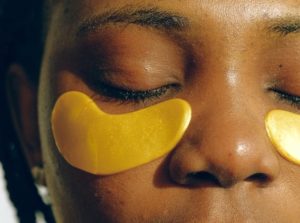9 Tips For Waxing Older Skin

Waxing older skin can be a little tricky especially if you do not know what you are doing.
Waxing is a widely used method for removing hair that can also offer advantages for ageing skin when performed correctly.
Since mature skin is thinner and more delicate, it necessitates special care and technique to prevent irritation and harm.
When done correctly, waxing can safely eliminate hair from older skin, resulting in a smoother, exfoliated, and more youthful appearance.
This article offers handy tips and detailed guidance on how to wax mature skin properly.

1. How to Prep the Skin
Properly preparing your skin is crucial to avoid any complications when waxing more delicate, mature skin.
Before waxing, exfoliate the targeted area gently with a scrub at least 2-3 days in advance.
This helps eliminate dry and dead skin cells, allowing for a closer and easier waxing experience.
Avoid using abrasive scrubs.
Refrain from using retinoids, alpha hydroxy acids (AHAs), or any other exfoliating treatments at least 1 week before waxing, as these can cause skin sensitivity.
Ensure the skin is thoroughly cleansed and dry before waxing to prevent oil build-up, which can affect wax adherence.
Lightly dusting with powder can help absorb any excess oils.
If you have sensitive skin, consider taking an over-the-counter pain reliever like acetaminophen 30 minutes in advance.
Also, avoid blood thinners as they may cause bruising.
Check out The Impact Of Communication In Healthcare.
2. The Waxing Process

To prevent burns on delicate mature skin, ensure that the wax is warm rather than hot to the touch.
Prior to application, always perform a temperature test on the underside of your wrist.
Apply a pre-wax oil or gel to the intended waxing areas for enhanced skin protection and easier wax removal.
By using applicator sticks, apply the wax in a thin and even layer, following the direction of hair growth.
Press the fabric strip firmly on top and swiftly flick it off in the opposite direction of hair growth, holding it parallel to the skin.
Avoid pulling slowly or at the wrong angle, as it can cause increased pain and skin tearing.
After applying wax to each section, gently press your hand on the skin and massage in the direction of hair growth to provide relief.
Refrain from waxing the same area multiple times.
When removing the strip, ensure that the skin is held taut to prevent any discomfort.
Be cautious not to wax over thin skin, moles, veins, or other sensitive areas susceptible to bruising or tearing.
3. After Care
Proper care after waxing is paramount, especially for mature skin.
It is important to cleanse the area gently and apply an antiseptic to prevent infection in the open hair follicles.
To soothe inflammation and skin irritation, you can use a cold compress. Make sure to moisturize well with a gentle, fragrance-free moisturizer.
Lightly exfoliate every 2-3 days for up to 2 weeks to prevent ingrown hairs, which are more common in aged skin.
To prevent sun exposure after waxing, use sunscreen with a minimum SPF of 30+. The skin becomes more sensitive to UV damage after exfoliation.
Other Tips for Waxing Mature Skin

4. Employ the technique of working in small sections, waxing only a portion of the skin at a time.
This approach enables more frequent removal of the wax before it overheats the skin, ensuring a safe and comfortable experience.
5. Seek out a skilled esthetician with expertise in waxing mature skin and the ability to offer valuable advice.
6. To prevent damage, refrain from waxing skin that is excessively thin or has been sun-damaged and is susceptible to tearing.
7. Take over-the-counter pain medication 30 minutes prior if sensitive to discomfort.
8. Thoroughly examine the skin afterwards and provide appropriate care for any skin tears to prevent infection.
9. Apply cool compresses afterwards to soothe and calm any irritated areas.
Should Seniors Get Waxed? Pros and Cons Revealed
Waxing can be a safe and beneficial option for individuals over 60 as long as appropriate measures are taken.
The advantages of waxing for seniors include the removal of unwanted hair, exfoliation and rejuvenation of the skin, and facilitating the application of topical medications.
Additionally, smooth skin can help alleviate general skin irritation caused by trapped hairs.
Nevertheless, there are drawbacks to waxing, as it poses a greater risk of skin injury, such as tears, burns, and bruising.
The recovery process may also be prolonged.
Waxing thin or sun-damaged skin can be challenging without causing trauma.
Areas with prominent blood vessels or veins may experience bleeding when waxed.
Note that seniors may experience higher levels of discomfort during the process.
In general, waxing can be safely done on healthy and mature skin in moderation.
It is important to avoid waxing areas with thin and fragile skin. Consult an esthetician who specializes in waxing for seniors prior to doing any procedures.
Using pre-wax numbing creams can help minimize discomfort. Properly care for the skin after waxing to prevent any complications.
Read 15 Health Benefits Of Reading Books.
Common Waxing Methods for Seniors

Hard Wax Beans
This flexible wax does not need fabric strips. As it solidifies, the wax contracts and removes hairs.
Hard wax is gentle, minimizes pain, and poses less risk for mature skin. The wax can be reapplied effortlessly until all hairs are eliminated.
It also cools and solidifies rapidly, ensuring no hot wax remains on the skin. The beans provide precise control for targeting smaller areas.
Soft Wax Strips
These ready-to-use strips coated with adhesive wax are convenient, but they pose a higher risk for seniors.
The hot wax can quickly overheat delicate skin. Opt for specially designed rounded strips for Brazilian waxing, as they are gentler.
Avoid using extremely sticky or extra-strength waxes. To minimize irritation, apply and remove the strips in small sections, working quickly.
Sugar Waxing
A thick sugar paste is applied and then removed with strips once it has dried. Sugar waxing is performed at a lower temperature, making it less risky for delicate skin.
However, it may be less effective in removing shorter and finer hairs.
On the other hand, sugar wax doesn’t strongly adhere to live skin, resulting in less irritation. If using a homemade recipe, ensure proper sterilization.
Conclusion
While waxing mature skin, especially when you are above 65, requires careful attention, time, and knowledge, it can be safely achieved with caution to ensure you stay healthy after 65.
Always ensure proper skin preparation and use the correct techniques to minimize discomfort and skin damage.
If possible, seek the assistance of an experienced esthetician. Follow these tips: work in small sections, apply pre-wax oils, and avoid using overly hot wax.
Senior adults can also benefit from waxing with patience and gentleness. Proper aftercare and gentle exfoliation can prevent issues like ingrown hairs.
Address any skin injuries appropriately. When done carefully, waxing can help create a smooth and refined skin tone and texture at any age.






